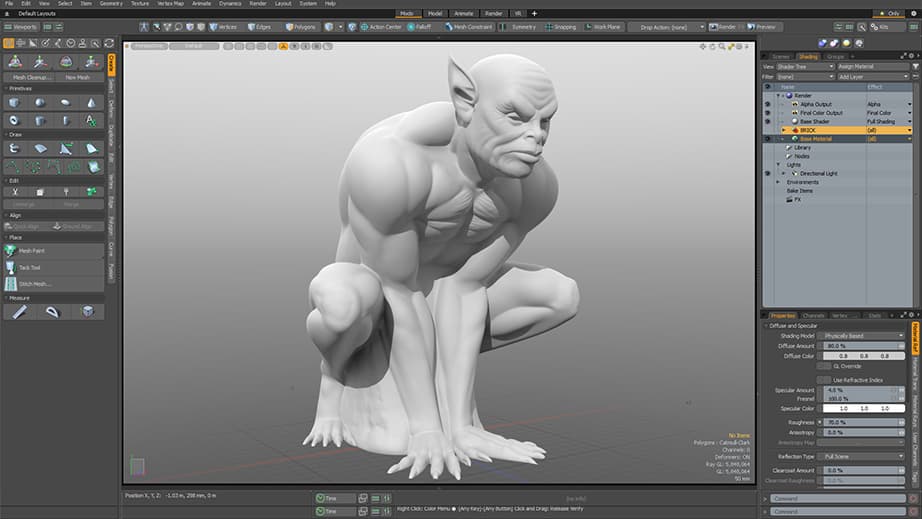

Multi-resolution sculpting in MODO 901 now supports layers, so you can have multiple sculpt layers at each mesh level displacement values from all the layers are blended together into the final result. Other new UV features include the ability to copy and paste UVs based on topology, straightening options for the UV Relax tool, and a UV Rectangle command to align strips that have a regular grid pattern.
#Modo 801 download generator#
Other enhancements include new Linear and Radial Align tools, a Twist option for the Curve Generator tool, improved edge loop selection options, slicing across multiple edges, and more.Įnhanced multi-tile UV workflows in MODO 901 include the ability to pack UVs across multiple tiles at once, a new UDIM Indicator that displays various information about the current tile, and UDIM support within many tools and commands. MODO 901 brings a number of enhancements to its renowned modeling toolset: the ability to work with models that are topologically but not spatially symmetrical lets you work on both sides of a posed model at once the Slice tool now offers the option to automatically cap the resulting meshes and you can now fill a four-sided region with a grid pattern of quads. What’s more, new sampling techniques improve rendering performance with many direct lights and light linking.

In other specific examples, animating deforming subdivision surfaces is now significantly faster, thanks to the new support for the OpenSubdiv library, while the progressive renderer now employs several techniques to provide faster updates.

With a major focus on improving performance on large scenes, MODO 901 accelerates workflows across the board-including selecting, displaying and deleting many items, or changing their type-in some cases by orders of magnitude. In addition, you can now directly bake normal maps with Mikk and other custom tangent spaces for compatibility with a wide number of games engines. The result? Faster iterations and an overall better baking workflow. Using a ray tracing methodology, you can preview your textures as you bake, and watch them refine progressively-allowing you to tweak settings and make surface changes without waiting for a final render. Progressive baking Texture baking in MODO 901 goes to the next level, with a new technique that takes advantage of MODO’s progressive renderer. Edited vector compositions can also be exported back out as SVG files for use downstream in the design or manufacturing process. You can use SVG artwork in your MODO scene as texture files, or as curves that can then be manipulated in 3D, or act as a framework for you to construct meshes. Make use of resolution-independent vector-based artwork created in a program such as Adobe® Illustrator® or converted from a CAD file with new support for SVG (Scalable Vector Graphics) files, together with a new Curve Fill polygon type. MeshFusion also comes with a library of preset primitives that you can use to construct your object final output is a watertight mesh suitable for further editing in MODO or export to. You can interactively intersect, add and subtract subdivision surface (SDS) objects, control the blending between, and intuitively edit the assembly instructions. Now a fully integrated feature of MODO 901, MeshFusion takes away the challenge of complex and frustrating Boolean operations, making it easier to consistently produce high-quality models. Powered by The Foundry’s Clear technology, the new advanced viewport lets you manipulate geometry and materials in a real-time setting that accurately displays lighting and shadows, BRDF materials, reflections, gloss, screen-space ambient occlusion, high-quality transparency, anti-aliasing, supersampling and a number of 2D post-processing effects. Iterate faster in a high-fidelity context that closely reflects your final render, with MODO 901’s new hardware-accelerated photorealistic viewport.


 0 kommentar(er)
0 kommentar(er)
